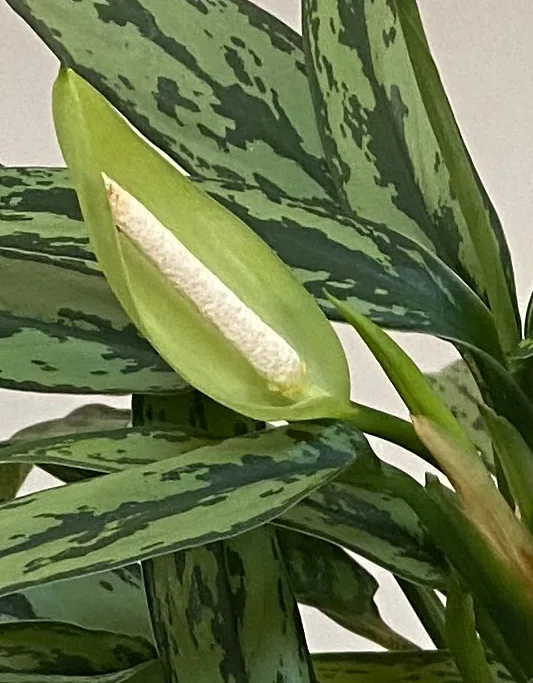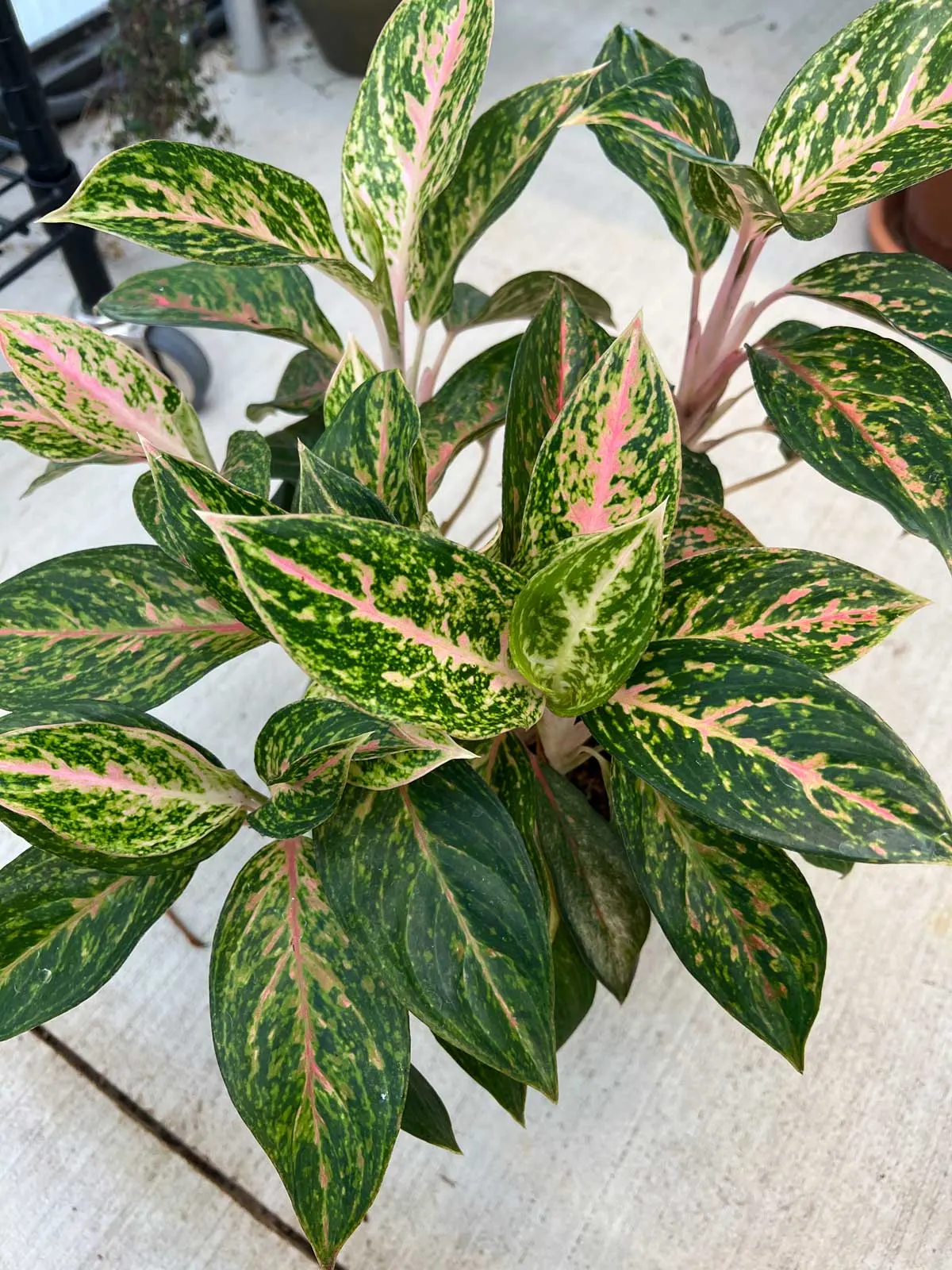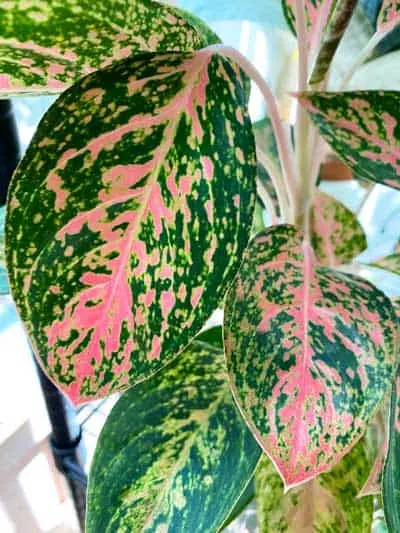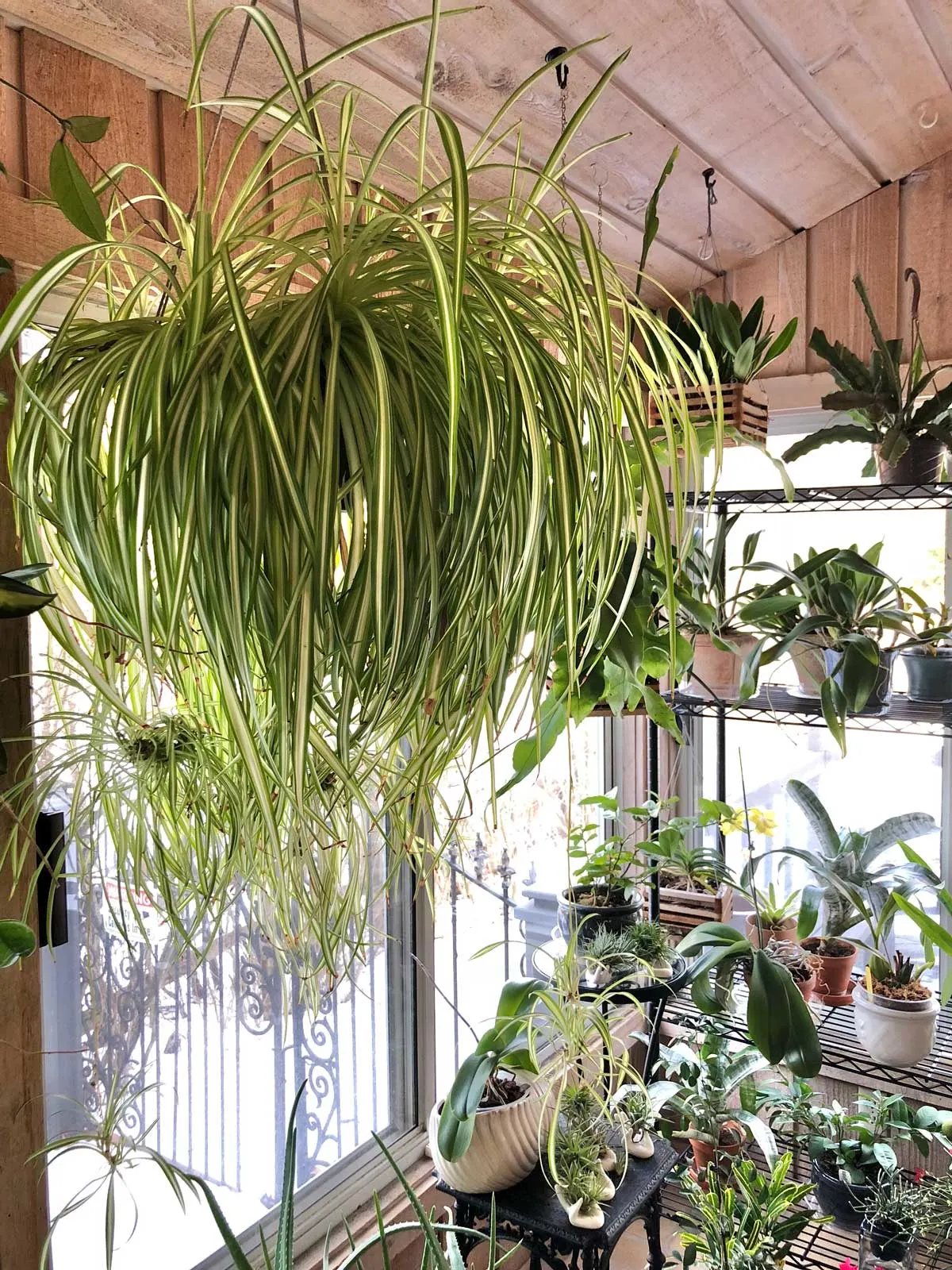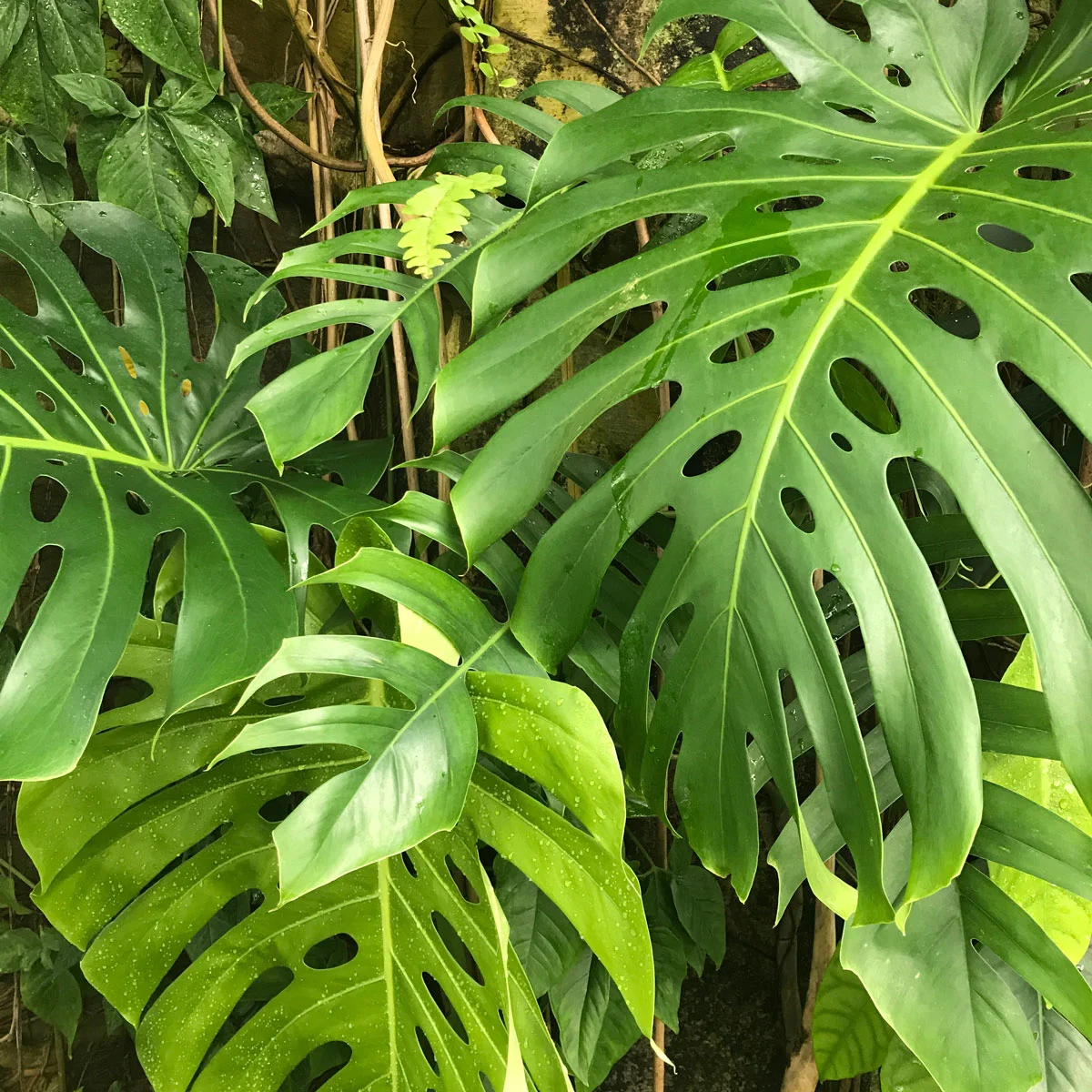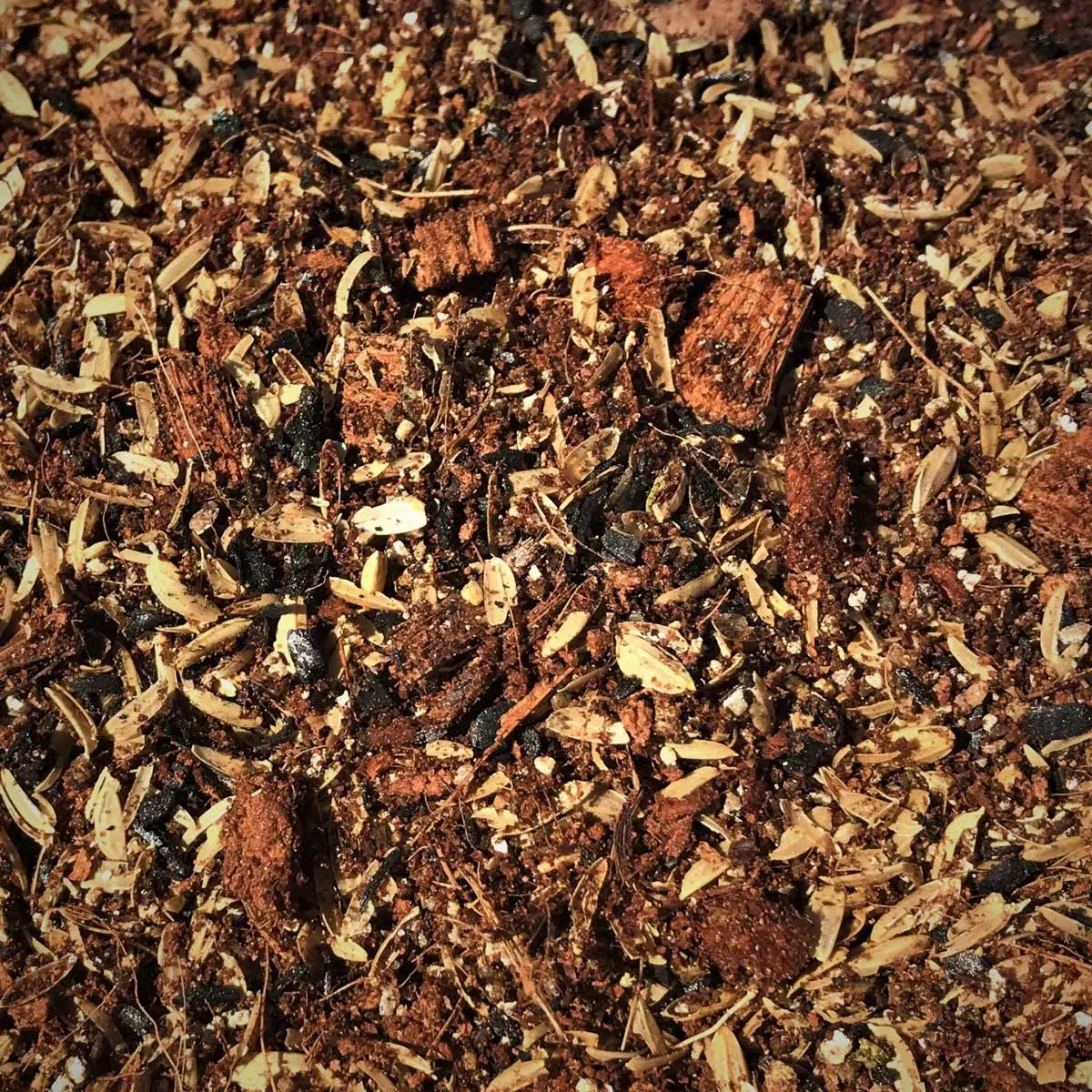Some of the links in this post may be affiliate links.
Are you wondering what the best soil for Aglaonema is? Commonly known as Chinese Evergreen Plant, the species in the Aglaonema genus make for wonderful indoor plants. Understanding the natural habitat will give us valuable clues on how to grow this plant, including choosing the best potting mix. Keep reading to discover 3 wonderful potting soils that you can use.
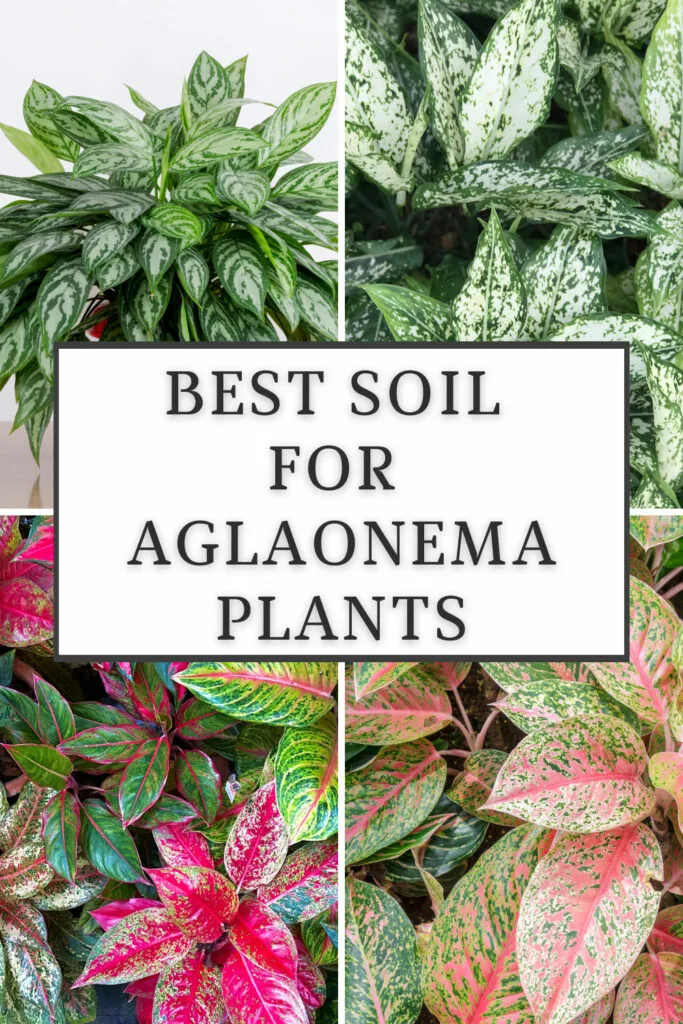
Table of Contents
BEST SOIL FOR AGLAONEMA
Aglaonema plants are native to the the tropical rainforest understory in southeast Asia. As a result, it’s not shock that these tropical plants like warmth, high humidity, and moist soil.
Keeping this in mind is important when choosing a potting mix.
Here are 3 wonderful potting mixes that you can use.
1. Rainforest Soil Blend
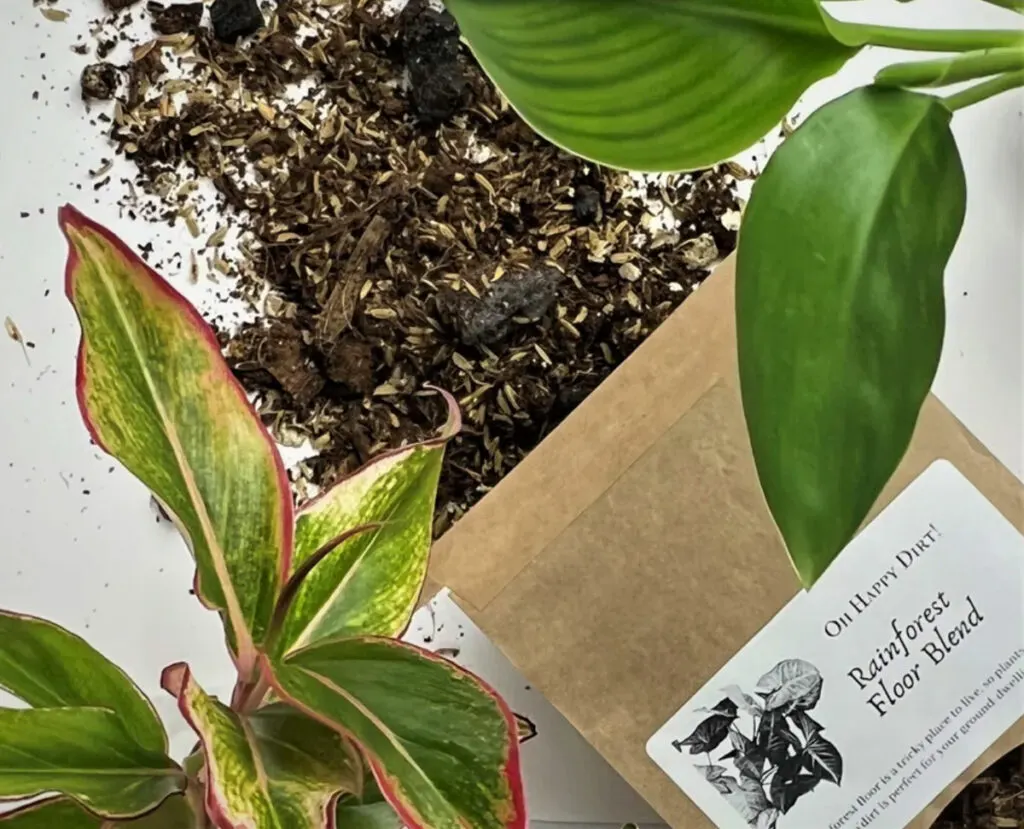
Not all potting mixes are created equal. The founder of Oh Happy Plants realized this and used nature as her guide in determining the best types of potting mixes for specific plant types.
I’ve been using these potting mixes for a while now and they are remarkable. The difference I’ve noticed in my plants has been amazing.
By far the best potting mix that you can use for your Aglaonema is the Rainforest Soil Blend from Oh Happy Plants. Any purchases made through this link will automatically give you 10% off at checkout.
Why is this mix superior? The tricky part to get right with soil mixes is that these plants like to stay pretty evenly moist, but they do need good drainage in order to avoid root rot. How do you accomplish this?
Well, Oh Happy Plants has figured this out well so you don’t have to!
The Rainforest Soil Blend from Oh Happy Plants was formulated to mimic the rainforest floor and is a wonderful mix because it contains:
– Plenty of organic matter and is pH balanced so your plant can perform its best.
– A mycorrihizal inoculant which will improve your plant’s vigor and increase disease resistance.
– Volcanic and glacial rock dusts for additional nutrients.
– Coco coir and coco chips (no peat moss is used).
– No perlite! If you’re not a fan, perlite is not used in any of the blends from Oh Happy Plants.
– Bags and labels that are compostable!
It is also formulated to hold a little more water than their Tropical Climber blend and has a finer texture due to the addition of rice hulls. Don’t be surprised if you get an occasional rice seed sprouting. Just pull it out if you see one.
All in all, this is an amazing mix for your Aglaonema or Chinese Evergreen. It is moisture-retentive, while at the same, has good drainage so there is no excess water hanging around to cause root rot.
There are also numerous other wonderful mixes. So check out the Rainforest Soil Blend and get 10% off automatically at checkout!
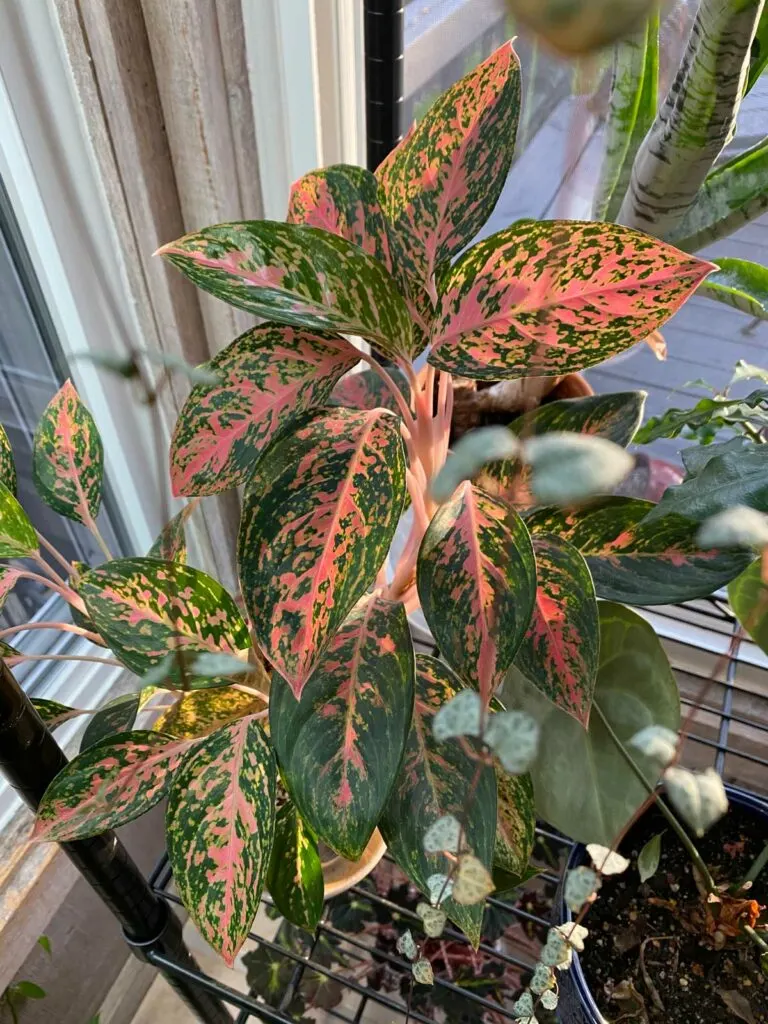
2. Mix Your Own With Perlite or Pumice
If you’d like to use materials that you have on hand or can easily mix yourself, these next two mixes would be simple to make. I never use potting mixes like Miracle Gro or Espoma on their own.
I always mix something in it because there simply isn’t enough porosity in those mixes. Once amended, they are much better suited to indoor use.
You can simply use 2-3 parts of your favorite indoor, all-purpose potting mix and and add one part perlite or even one part pumice.
Some people don’t like perlite since it tends to float to the top of your soil over time, but it’s still a good additive. I’ve found that using a larger perlite (like #3 perlite that I’ve ordered many times from Amazon) works better than smaller perlite so I prefer this personally!
As far as pumice goes, I really love using 1/4″ pumice from Bonsai Jack. I use a lot of it in different mixes and it is always a consistent quality.
Check out the pros and cons of perlite vs pumice to help you make your decision.
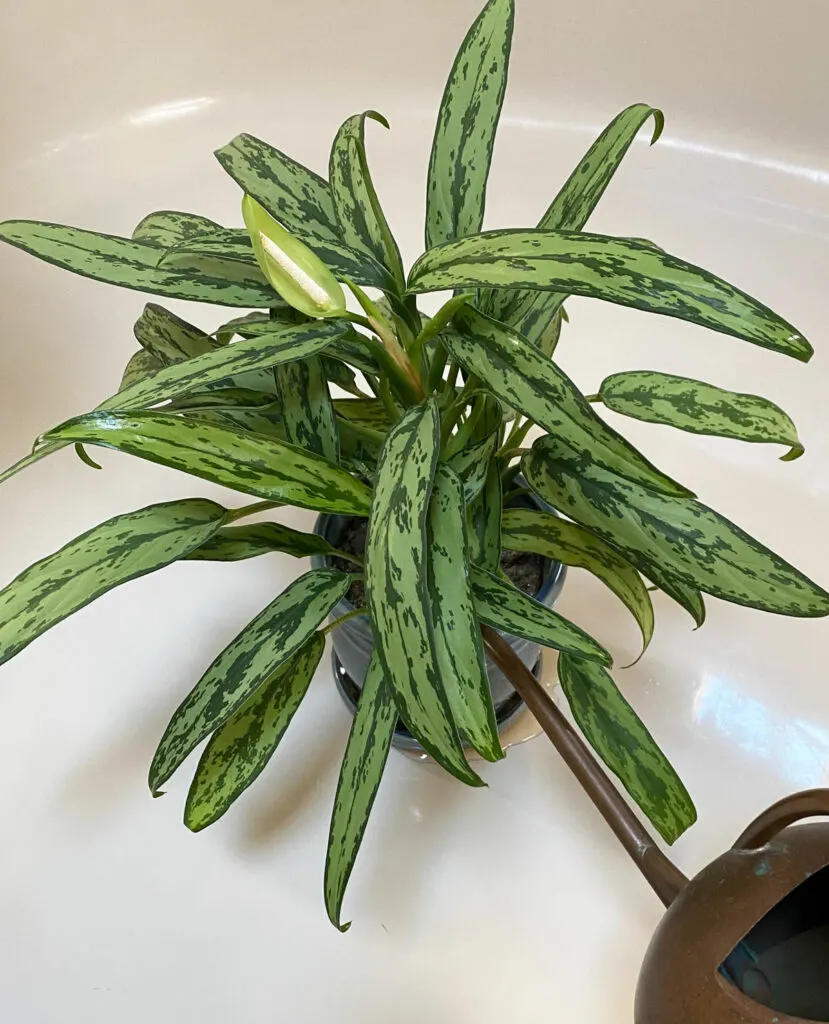
3. Simple 4 Ingredient Mix
Another option to use is the following: 2 parts of an all purpose mix (like Miracle-Gro or Espoma), 1 part orchid bark, and 1 part of either perlite or pumice.
The addition of the orchid bark will make the drainage even better. Of course, the type of mix that you use will all depend on your growing conditions.
Getting to know your own growing conditions and adjusting your potting mix blends is the way to go. There are a number of factors that affect how quickly your potting mix dries out including:
LIGHT – Not enough light will slow down the rate at which your plant uses water, and the soil will take longer to dry out.
HUMIDITY – Humidity levels affect the rate at which your potting mix dries out. More humid conditions will slow down the rate at which your soil dries.
POT TYPE – Porous pots like terra cotta will dry out your soil more quickly. It can be counterproductive to use a terra cotta pot for moisture loving plants like Aglaonema. Choosing the right pot type can make a big difference. Drainage holes are always a must regardless what pot type you have.
POT SIZE – Oversized pots can take too long to dry out due to the excess soil.
POTTING MIX TYPE – This is very important as the composition can really affect how quickly the soil dries out.
TEMPERATURE – Warmer temperatures increase the rate of photosynthesis and also cause more evaporation, and both of these will dry out the soil faster.
I go through all these relationships in my book, Houseplant Warrior: 7 Keys to Unlocking the Mysteries of Houseplant Care.
GENERAL AGLAONEMA CARE
One of the most popular houseplants, Aglaonema is a very tolerant plant in our indoor growing environment. Its ability to survive low-light conditions makes it very desirable, but with a little extra TLC, you can have a beautiful specimen!
One important thing to mention is that all of our growing conditions are different, so don’t stick with a rigid watering schedule, and don’t necessary follow the “once a week” watering schedule. You should water when your plant needs to be watered, versus when a schedule tells you to.
That being said, your soil mixture should start to dry out in a reasonable amount of time. If it’s not drying out at all after a week or so, you may want to reconsider your growing conditions and maybe your potting mix type.
Here are some general tips on growing Aglaonema or Chinese Evergreen. You can also refer to my Chinese Evergreen Care post which also includes a few beautiful Aglaonema varieties.
LIGHT
Aglaonema plants are wonderful to grow in a variety of lighting conditions, even in low light conditions. Keep in mind that the more brightly colors plants that are pink or red will wash out if the light is not strong enough.
This is the perfect plant for an office space that has lower light levels, but still has overhead lighting on for the majority of the day.
In general, you can grow them even in nothing but fluorescent lighting, but they would appreciate a little more. Bright indirect light from windows with no direct sun are perfect for these plants, but they will do even better with 2-3 hours of direct sun, especially morning sun which is gentler.
WATERING
Water thoroughly after the top inch or so of the potting soil has dried out. These plants like a fairly even soil moisture, but proper drainage is still needed.
Aglaonema plants do not like to go completely dry. Doing so will cause the lower leaves to start yellowing, as well as cause the tips of the leaves to brown.
Tap water is perfectly fine to use as long as you don’t have a water softening system that adds sodium to the water. Just avoid using cold water. Room temperature or tepid water is best.
FERTILIZING
Aglaonema is a fairly slow-growing plant, but they will still appreciate fertilization. You can use a slow-release fertilizer like Osmocote, or a good liquid fertilizer like Dyna-Gro Grow.
TEMPERATURE & HUMIDITY
Chinese Evergreen plants love warmer conditions, so try and avoid minimum temperatures below 60°F (16°C). They would be very happy in the 70-85°F (21-29°C) temperature range. Also avoid any cold drafts.
I hope you’ve enjoyed this post on best soil for Aglaonema. What soil blend have you used? Comment below. I’d love to hear!

